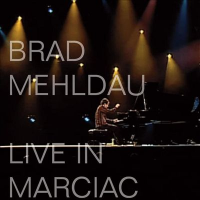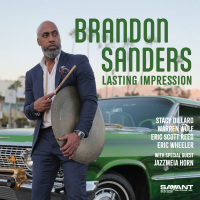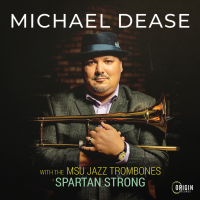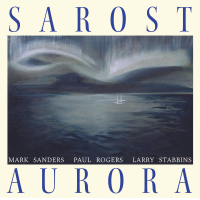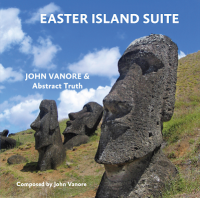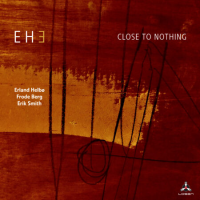Home » Jazz Articles » Extended Analysis » Modern Jazz Quartet: Modern Jazz Quartet: The Complete A...
Modern Jazz Quartet: Modern Jazz Quartet: The Complete Atlantic Studio Recordings 1956-64

 The Modern Jazz Quartet
The Modern Jazz Quartet The Complete Atlantic Studio Recordings of The Modern Jazz Quartet 1956-64
Mosaic Records
2011
Even now, nearly sixty years later, it seems improbable that a group which came together as the rhythm section for one of the hottest players in bebop's genesis era, trumpeter Dizzy Gillespie, could morph into a standalone group that was the epitome of grace, elegance and cool dignity. But that's exactly what happened when Gillespie recruited pianist John Lewis (1920-2001), vibraphonist Milt Jackson (1923-1999), bassist Ray Brown (1926-2002) and drummer Kenny Clarke (1914-1985), giving the quartet an opportunity to shine as a discrete unit when it came time, during his sextet's exhausting sets, to give the horns a break, calling, "OK, band off!"
Brown didn't stay very long when the quartet decided to continue as the Milt Jackson Quartet; after recording just four sides, he left for greater fame, fortune and longevity with Canadian pianist Oscar Peterson (1925-2007). Not long after Percy Heath (1923-2005) replaced Brown in MJQ, the group managing to retain its acronym while transforming into The Modern Jazz Quartet, to reflect the egalitarian nature of the group—though from a compositional perspective, MJQ would become increasingly dominated by Lewis' writing; music that reflected no small influence by western classical music, and which would give the quartet a distinct identity that, in the eyes of the bebop world, was more than a little contentious but, decades later, can be seen as a left turn into an entirely new arena for jazz exploration.
After two recordings for the small but, well, prestigious Prestige label—1953's Modern Jazz Quartet, Vol. 1 and 1955's now-classic Django, featuring Lewis' iconic title track, inspired by Gypsy guitarist Django Reinhardt—MJQ experienced one final personnel shift when Clarke left the group, in 1955, to move to Paris and an active career with another American expat, pianist Bud Powell. Recruiting Conrad Kirnon (better-known as Connie Kay (1927-1994)), the group finally found the lineup that would outlast most jazz groups to this day, recording one final record for Prestige, Concorde (1956), before being signed to the much larger Atlantic Records, a label better-known as a soul/R&B imprint, but also focusing on building its jazz cred through signing artists like bassist Charles Mingus and rising star, saxophonist John Coltrane.
The Modern Jazz Quartet went on to record exclusively with Atlantic for the next nine years, releasing a total of fourteen albums between 1956 and 1964, all collected on the lovingly remastered and beautifully packaged The Complete Atlantic Studio Recordings of The Modern Jazz Quartet 1956-64, which brings many of these titles back into print for the first time in two decades or more. In a new millennium, with MJQ—once considered in the upper echelons of mainstream jazz—having lost some of its staying power, this seven-CD box couldn't come at a better time, for those who've been missing the group's music, and for those unfamiliar with its inestimable, understated charm.

The Modern Jazz Quartet, from left: Percy Heath, Connie Kay, John Lewis, Milt Jackson
For those operating under the misconception that the African-American jazz tradition was monolithically linked to the blues, a closer look at jazz history reveals a more cosmopolitan reality. As far back as the 1930s, clarinetist Sidney Bechet was liberally quoting from Italian operas in his solos, but it was, perhaps, less obvious, less visible, than when John Lewis began looking at ways to bring the intimacy of classical chamber music to a jazz context. In direct contrast to bebop's fire and unbridled energy, MJQ was one of the earliest examples of the cool jazz that would ultimately become associated with the American west coast, despite MJQ's members largely coming from the east. Before MJQ, Lewis was also part of the nonet that, in the period 1949-50, would record sides later collected on trumpeter Miles Davis' The Birth of the Cool (Capitol, 1957)—also contributing that LP's penultimate track, "Rouge"—and so, his interest in music that was breezy rather than boiling was established at an early stage in his career.
 With an instrumental lineup that eschewed conventional horns for the more ethereal possibilities of piano and vibes, MJQ managed, early on, to be one of the first American groups to play concert halls in Europe—no doubt because of its incorporation of classical ideas into a jazz context. That the always tuxedo-dressed MJQ was more suited for concert hall than smoky, sweaty jazz club was also reflected in Lewis' eventual insistence on nothing but Steinway grand pianos—despite being denied use at those early European concert hall performances because those pianos were held only for use with "proper music."
With an instrumental lineup that eschewed conventional horns for the more ethereal possibilities of piano and vibes, MJQ managed, early on, to be one of the first American groups to play concert halls in Europe—no doubt because of its incorporation of classical ideas into a jazz context. That the always tuxedo-dressed MJQ was more suited for concert hall than smoky, sweaty jazz club was also reflected in Lewis' eventual insistence on nothing but Steinway grand pianos—despite being denied use at those early European concert hall performances because those pianos were held only for use with "proper music." The pairing of Lewis and Jackson proved an ideal tension, demonstrating how different musical interests can, indeed, come together to create something altogether new, the pianist's interest in classical music dovetailing perfectly with the more overtly jazz-centric and grounded vibraphonist. From the first notes of Lewis' "Versailles," the opener of 1956's Fontessa, the pianist's classical leanings are clear, as he engages Jackson and Heath in some delicate yet exciting, Bach-informed contrapuntal construction. But when Kay switches from triangle to cymbal and Heath turns to a walking bass line, the jazz side of the MJQ equation is clearly established, even as the foundation for Lewis and Jackson's relationship blurs the line between written form and improvisation that's clearly based on that form. A duo version of "Over the Rainbow" focuses on Lewis and Jackson's adept skill at reshaping music from external sources with MJQ's classically informed modus operandi.
Fontessa's title track explores the duo's empathic interaction even further, on a minor-keyed quartet piece that, in the span of eleven minutes, establishes many of the touchstones that would define MJQ for the rest of its career. Jackson is clearly the most overtly virtuosic of the bunch, his solos combining a bebop-rooted facility to play through and over changes. Lewis plays with an economy particularly rare at a time when musicians were regularly engaging in cutting sessions to prove their prowess—more Count Basie than Powell, Thelonious Monk or Hank Jones. Heath's background was also in bebop, but a few lessons with Mingus early in his tenure with MJQ—learning how to better read the pianist's charts and become more proficient with a bow—helped the bassist to become both a contrapuntal foil and an unshakable rhythmic anchor. Kay was less known than his predecessor in MJQ, but his disciplined approach and avoidance of the more muscular approach of bop's definitive drummers, including Art Blakey, Roy Haynes and Max Roach, made him an ideal choice for the group.
And lest anyone think MJQ placed too little emphasis on the "Jazz" part of its name, Jackson's "Bluesology" makes clear that this is a group that can swing with absolute credibility, even as Kay's avoidance of fills gives it a lighter complexion, despite Heath's robust tone and Jackson's paradoxically earthy solo, on an instrument equally perfect for the more ethereal, rarefied air of some of Lewis' writing.
 Over the course of its 14 studio recordings for Atlantic, ending with Plays George Gershwin's Porgy and Bess (1965), the quartet honed its sound and slowly evolved, rarely making quantum leaps, though there were a few occasions where it headed into more intrepid territory. If ever there was a group to dovetail with Gunther Schuller's jazz-meets-classical Third Stream, it was MJQ, though in some ways the orchestra-meets-quartet of The Modern Jazz Quartet and Orchestra (1960) suffers from certain inconsistencies; less a feeling of integration and more a sense of shoe-horning two feet into the same boot. Still, the album does avoid the gravitas that other attempts at stylistic fusion did at the time, and with Heath and Kay's visceral, mid-tempo swing driving André Hodeir's opening "Around the Blues," there's still plenty of opportunity for Lewis and Jackson to explore in their individualistic fashions, while on Schuller's side-long "Concertino for Jazz Quartet and Orchestra," the composer/conductor manages, for the most part, to apply the expansive sonics of an orchestra without overwhelming the more delicate nature of MJQ. Lewis' sole compositional credit, "England's Carol," finds the pianist expanding on the Christmas song, "God Rest Ye Merry Gentlemen," that he'd previously adapted for the quartet alone on The Modern Jazz Quartet at Music Inn (1956).
Over the course of its 14 studio recordings for Atlantic, ending with Plays George Gershwin's Porgy and Bess (1965), the quartet honed its sound and slowly evolved, rarely making quantum leaps, though there were a few occasions where it headed into more intrepid territory. If ever there was a group to dovetail with Gunther Schuller's jazz-meets-classical Third Stream, it was MJQ, though in some ways the orchestra-meets-quartet of The Modern Jazz Quartet and Orchestra (1960) suffers from certain inconsistencies; less a feeling of integration and more a sense of shoe-horning two feet into the same boot. Still, the album does avoid the gravitas that other attempts at stylistic fusion did at the time, and with Heath and Kay's visceral, mid-tempo swing driving André Hodeir's opening "Around the Blues," there's still plenty of opportunity for Lewis and Jackson to explore in their individualistic fashions, while on Schuller's side-long "Concertino for Jazz Quartet and Orchestra," the composer/conductor manages, for the most part, to apply the expansive sonics of an orchestra without overwhelming the more delicate nature of MJQ. Lewis' sole compositional credit, "England's Carol," finds the pianist expanding on the Christmas song, "God Rest Ye Merry Gentlemen," that he'd previously adapted for the quartet alone on The Modern Jazz Quartet at Music Inn (1956). At Music Inn might seem to be in opposition to the box set's Complete Studio Recordings moniker, but this venue in Lenox, Massachusetts, was actually a resort converted into performance space where MJQ was brought in as "jazz group in residence" during the month of August, 1956, and given the opportunity to spend some quality development time, studying, rehearsing and recording away from the demands of the road.
 Over the nine years, there were the occasional collaborators. Tenor giant Sonny Rollins sits in on two tracks from At Music Inn, Volume 2—not more music culled from the 1956 sessions, as it might suggest, but a whole new month, August 1958, spent at the Lennox facility. But this rare inclusion of saxophone, especially Rollins' deep, throaty tone and pyrotechnic tendencies, grounds MJQ in a way rarely heard throughout its twenty three-year run. Kay may still be playing as lightly as ever, but during Rollins' solo on Jackson's "Bags' Groove," he's inspired to turn up the heat in his cymbal work, while leaning more heavily on fills and sharp punctuations during a version of Gillespie's enduring "Night in Tunisia" that, despite being taken at a slower tempo, out-burns the MJQ version on 1957's The Modern Jazz Quartet.
Over the nine years, there were the occasional collaborators. Tenor giant Sonny Rollins sits in on two tracks from At Music Inn, Volume 2—not more music culled from the 1956 sessions, as it might suggest, but a whole new month, August 1958, spent at the Lennox facility. But this rare inclusion of saxophone, especially Rollins' deep, throaty tone and pyrotechnic tendencies, grounds MJQ in a way rarely heard throughout its twenty three-year run. Kay may still be playing as lightly as ever, but during Rollins' solo on Jackson's "Bags' Groove," he's inspired to turn up the heat in his cymbal work, while leaning more heavily on fills and sharp punctuations during a version of Gillespie's enduring "Night in Tunisia" that, despite being taken at a slower tempo, out-burns the MJQ version on 1957's The Modern Jazz Quartet. Clarinetist/saxophonist Jimmy Giuffre—another chamber jazz advocate—guests, in much cooler fashion, on Lewis' "Fugue for Music Inn," from The Modern Jazz Quartet at Music Inn, while Brazilian nylon-string guitarist Laurindo Almeida—a player as comfortable in the jazz world as he was the classical—fleshes the quartet to a quintet for the entirety of 1964's Collaboration. In addition to two new Lewis charts and a relook at "Trieste," first heard on 1962's Lonely Woman, Collaboration also features MJQ's first overt Bach reference, adapting the composer's "Fugue in A Minor," along with a couple of Brazilian standards and, finally, a lengthy arrangement of Joaquim Rodrigo's "Concierto De Aranjuez," the classical piece brought, perhaps, more often than any into a jazz context, with everyone form Miles Davis and guitarist Jim Hall to pianist Chick Corea and bassist Buster Williams mining its profound lyricism.
Ornette Coleman's title track to Lonely Woman may, in fact, be the most unusual choice the MJQ ever made for adaptation; with not one, but two chordal instruments at hand, the quartet's reading is considerably distanced from the more open-ended harmonic ambiguity of the original, as is Kay's gentle but persistent pulse, leading into a solo from Heath that's one of his best of the box. The rest of the set, with the exception of Gary McFarland's down-tempo "Why Are You Blue," is comprised of all-new compositions from Lewis and, other than the 1974 swan song, The Last Concert—also on Atlantic but not included in the Mosaic box—finds the group coming as close to incendiary as it ever gets.
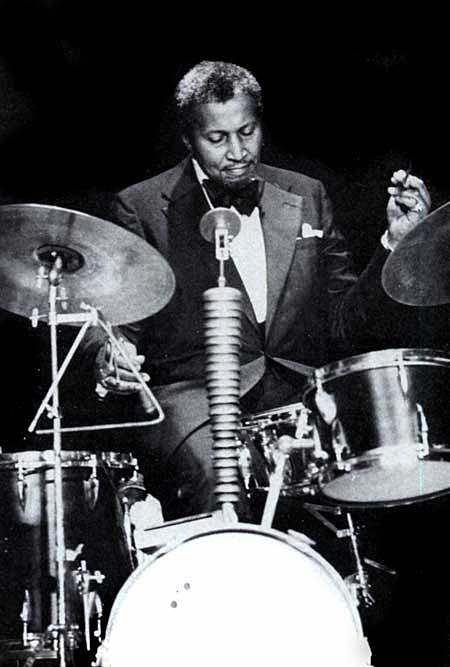 In the ten years between the end of this box and 1974, when Jackson would leave the band, MJQ continue to record largely, but not exclusively, for Atlantic, with two albums released under The Beatles' Apple imprint—Under the Jasmine Tree (1967) and Space (1969)—reissued on a single CD in 2010 and demonstrating that nothing about the group's approach had changed, though neither of them rank among MJQ's best. The Last Concert (Atlantic, 1974)—a double-vinyl set that was expanded, in 1990, to its full, nearly two-and-a-half hour duration—was as good a swan song as any disbanding group has released, though it ultimately proved not to be the end of MJQ. Instead, Jackson would rejoin Lewis, Heath and Kay for the occasional tour and recording, with Complete Modern Jazz Quartet Prestige and Pablo Recordings (Prestige, 2003) bringing its earliest and, ultimately, truly final recordings together in a single, five-CD box set.
In the ten years between the end of this box and 1974, when Jackson would leave the band, MJQ continue to record largely, but not exclusively, for Atlantic, with two albums released under The Beatles' Apple imprint—Under the Jasmine Tree (1967) and Space (1969)—reissued on a single CD in 2010 and demonstrating that nothing about the group's approach had changed, though neither of them rank among MJQ's best. The Last Concert (Atlantic, 1974)—a double-vinyl set that was expanded, in 1990, to its full, nearly two-and-a-half hour duration—was as good a swan song as any disbanding group has released, though it ultimately proved not to be the end of MJQ. Instead, Jackson would rejoin Lewis, Heath and Kay for the occasional tour and recording, with Complete Modern Jazz Quartet Prestige and Pablo Recordings (Prestige, 2003) bringing its earliest and, ultimately, truly final recordings together in a single, five-CD box set. But, with the exception of The Complete Last Concert and Django, The Modern Jazz Quartet's best work can all be found on this Mosaic box, in particular Lonely Woman. With Doug Ramsey's informative overview and session-by-session breakdown, The Complete Atlantic Studio Recordings of The Modern Jazz Quartet 1956-64 is the final word from a group that's now long-gone, but absolutely deserves not to be forgotten.
Tracks: CD1 Fontessa: Versailles (Porte de Versailles); Angel Eyes; Fontessa; Over the Rainbow; Bluesology; Willow Weep for Me; Woody 'n You. The Modern Jazz Quartet at Music Inn: Oh Bess, Oh Where's My Bess; A Fugue for Music Inn; Two Degrees East; Serenade; Fun; Sun Dance; The Man That Got Away; A Morning in Paris; Variation No. 1 on God Rest Ye Merry Gentlemen. CD2 The Modern Jazz Quartet: Medley (They Say It's Wonderful/How Deep is the Ocean/(I Don't Stand) A Ghost of a Chance With You/My Old Flame/Body and Soul); Between the Devil and the Deep Blue Sea; La Ronde Drums; A Night in Tunisia; Yesterdays; Bags' Groove; Baden-Baden. One Never Knows (No Sun in Venice: The Golden Striker; One Never Knows; The Rose Truc; Cortege; Venice; Three Windows. CD3 The Modern Jazz Quartet at Music Inn, Volume 2: Medley (Stardust/I Can't Get Started/Lover Man); Yardbird Suite; Midsummer; Festival Sketch; Bags' Groove; A Night in Tunisia. Pyramid: Vendome; Pyramid; It Don't Mean a Thing (If It Ain't Got That Swing); Django; How High the Moon; Romaine. CD4 Third Stream Music: Da Capo; Fine; Exposure; Sketch; Conversation. The Modern Jazz Quartet and Orchestra: Around the Blues; Divertimento; England's Carol; Concertino For Jazz Quartet and Orchestra, First Movement; Concertino For Jazz Quartet and Orchestra, Second Movement (Passacaglia); Concertino For Jazz Quartet and Orchestra, Third Movement. CD5 The Comedy: Spanish Steps; Columbine; Pulcinella; Pierrot; La Cantatrice; Harlequin; Piazza Navona. Lonely Woman: Lonely Woman; Animal Dance; New York 19; Belkis; Why Are You Blue; Fugato; Lamb, Leopard; Trieste. CD6 The Sheriff: The Sheriff; In a Crowd; Bachianas Brasilieras; Mean to Me; Natural Affection; Donnie's Theme; Carnival. A Quartet is a Quartet is a Quartet: Reunion Blues; Winter Tale; Concorde; Yesterdays. The Alternate Takes: Bluesology (stereo take); Woody 'n You (stereo take); Sun Dance (Stereo take); Django (mono take); La Cantatrice (mono take); Harlequin (mono take). CD7 Collaboration: Silver; Trieste; Valeria; Fugue in A Minor; One Note Samba; Foi a Saudade; Concierto de Aranjuez. The Modern Jazz Quartet Plays George Gershwin's Porgy and Bess: Summertime; Bess, You is My Woman; My Man's Gone Now; I Loves You Porgy; It Ain't Necessarily So; Oh Bess, Oh Where's My Bess; There's a Boat Dat's Leavin' Soon.
Personnel: Milt Jackson: vibraharp; John Lewis: piano, conductor (CD4#5);; Percy Heath: bass; Connie Kay: drums; Jimmy Giuffre: clarinet (CD1#9, CD1#11-12); Sonny Rollins: tenor saxophone (CD3#5-6); Gerard Tarack: first violin (CD4#5-6); Alan Martin: second violin (CD4#5-6); Carl Eberl: viola (CD4#5-6); Joe Tekula: cello (CD4#5-6); Gunther Schuller: conductor (CD4#3, CD4#6); Bill McColl: clarinet (CD4#3); Bob Di Domenica: flute (CD4#3); Manny Zegler: bassooon (CD4#3); Paul Ingraham: French horn (CD4#3); Joe Tekula: cello (CD4#3); Betty Glamann: harp (CD4#3); Symphony Orchestra, conducted by Wernere Heider (CD4#7); Symphony Orchestra, Conducted by Gunther Schuller (CD4#6, CD4#8-11); Diahann Carroll: vocal (CD5#5, CD6#16); Laurindo Almeida: guitar (CD7#1-7).
Photo Credits
Page 1: The Institute of Jazz Studies
Page 2, John Lewis: Jose Horna
Page 2, Milt Jackson: Jos L Knaepen
Page 3, Percy Heath: Ron Hudson
Page 3, Connie Kay: Courtesy of Drummer World
Personnel
Modern Jazz Quartet
band / ensemble / orchestraAlbum information
Title: Modern Jazz Quartet: The Complete Atlantic Studio Recordings 1956-64 | Year Released: 2011 | Record Label: Mosaic Records
Tags
About Modern Jazz Quartet
Instrument: Band / ensemble / orchestra
PREVIOUS / NEXT
Support All About Jazz
 All About Jazz has been a pillar of jazz since 1995, championing it as an art form and, more importantly, supporting the musicians who make it. Our enduring commitment has made "AAJ" one of the most culturally important websites of its kind, read by hundreds of thousands of fans, musicians and industry figures every month.
All About Jazz has been a pillar of jazz since 1995, championing it as an art form and, more importantly, supporting the musicians who make it. Our enduring commitment has made "AAJ" one of the most culturally important websites of its kind, read by hundreds of thousands of fans, musicians and industry figures every month.




